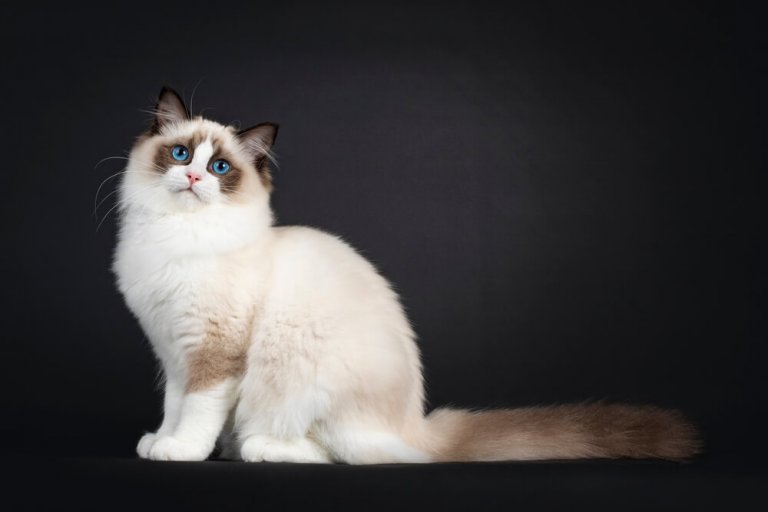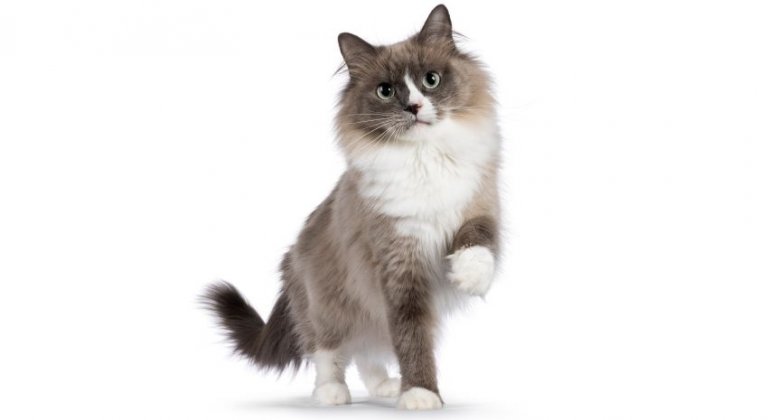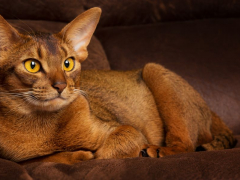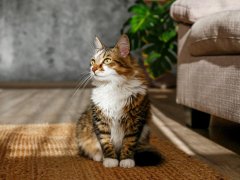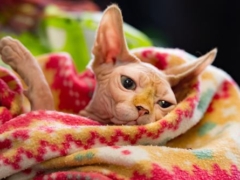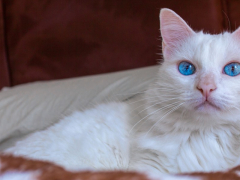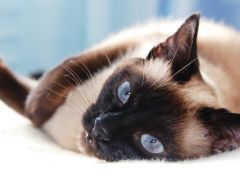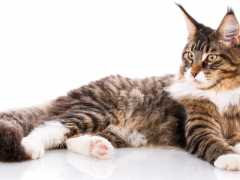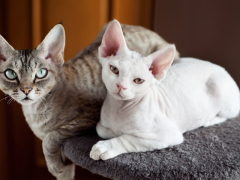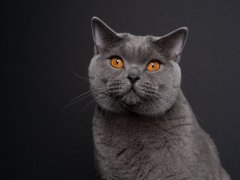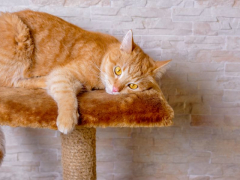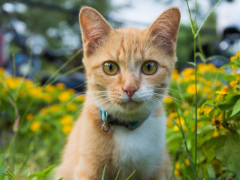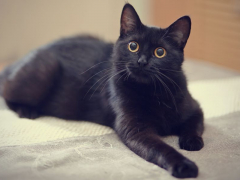Personality and Temperament
Some cats dislike being held, but the Ragdoll cat seems to live for cuddles. And where many cats are content to keep themselves entertained, Ragdolls actively seek the company of their favorite humans, following family members from one room to the next. Ragdolls are not particularly nosy, but they do enjoy participating in daily life, often observing activities with happy, bemused expressions on their adorable faces.
These affectionate cats prefer to be wherever you are, whether that's catching a favorite show on the couch or working on a project in the office or garage. Instead of knocking over your collectibles, the gentle Ragdoll is far more likely to carefully maneuver around your delicate items. Ragdolls are one of a handful of cat breeds that like water, so they're likely to follow you to the shower or sit on the edge of the bathtub, where they'll keep you company and perhaps get their paws wet.
Steadfast companionship isn't all you'll get from a Ragdoll. These gorgeous cats live to make you happy, often repeating behaviors that elicit favorable responses. With positive reinforcement, it's possible to teach a Ragdoll cat certain tricks and behaviors.
Ragdoll cats have a well-earned reputation for displaying dog-like behavior while offering the easy care that comes with choosing a cat as a family pet. Just in case you think you might miss walking a dog, rest easy. Many Ragdoll cats learn to walk on a harness and leash, and will happily accompany you through your neighborhood.
Speaking of dogs, Ragdolls get along with them just fine. These cats get along well with other cats, too, and they're capable of making friends with your entire family, including very young children.
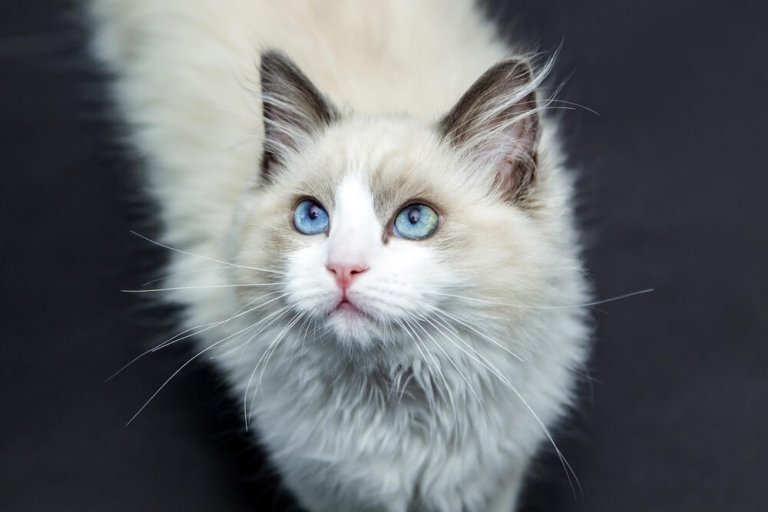
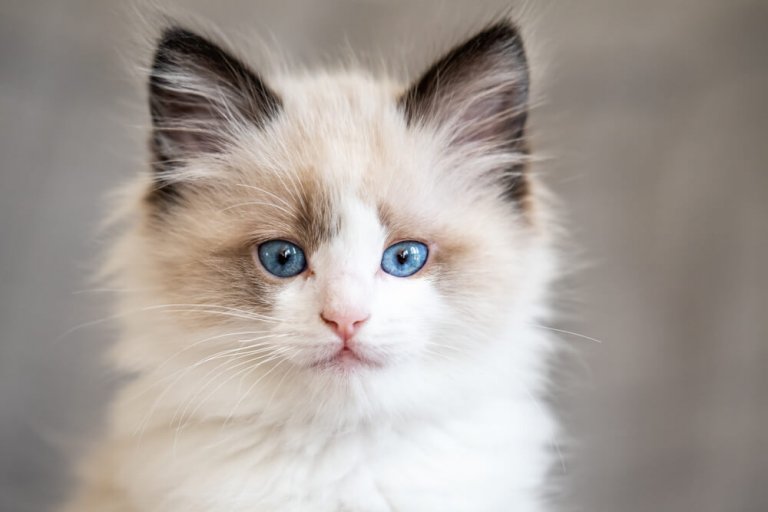
Care
Nutrition
Grooming
Exercise
Health
Ragdoll cats do not have any special nutritional needs, but the focus really needs to be on quality as these low-energy cats can gain too much weight if feed too much of a low-quality diet. Offer a high-protein, low-carbohydrate diet that incorporates real meat or fish as the main ingredient.
Because Ragdoll cats have luxurious double coats, they require regular grooming. Most Ragdoll cats appreciate daily brushing, which not only helps prevent mats from forming and keeps excess shedding and hairballs at bay, but also provides an added opportunity for them to bond with their favorite people.
Teach your cat to accept toothbrushing from a young age, and trim your Ragdoll cat's nails every two to four weeks.
Ragdoll cats love to nap and relax, however they also have a playful streak. Provide your cat with toys, scratching posts, and cat towers that provide them with a good view of whatever you are doing.
Ragdoll cats exhibit kitten-like behavior until they reach full maturity somewhere between the ages of 2 to 4 years. After that, it might be up to you to initiate play sessions and encourage your Ragdoll cat to engage in the exercise that's so essential to good health and longevity.
Ragdoll cats tend to enjoy good health and have an average life span of 12 to 15 years. However, like many pedigreed cats, Ragdolls are prone to certain genetic health conditions. Some Ragdolls might carry a gene that predisposes them to a heart disease called hypertrophic cardiomyopathy. Ragdolls are also at risk of polycystic kidney disease (PKD), bladder stones, and obesity.
History
The Ragdoll cat breed got its start in Riverside, California, during the 1960s. Breeder Ann Baker had a friendly white domestic longhair cat named Josephine, who had a reputation for giving birth to kittens with extraordinarily amiable personalities. As she worked toward developing the breed that would ultimately become the Ragdoll, Baker collected a variety of longhair cats of different backgrounds, focusing on excellent temperament, luxurious coats with Himalayan points, and large size.
It is likely that some of the cats that formed the foundation for the Ragdoll breed were Persians, Burmese, and Birmans. Part of the reason for this is that Persians and Birmans are noted for their relaxed attitudes.
Josephine was the first cat to contribute to the Ragdoll line, but two other cats included Blackie (a solid black cat with features reminiscent of the Burmese) and a cat named Daddy Warbucks. Josephine and Daddy Warbucks had a bicolor female offspring named Fugianna. Meanwhile, a litter that resulted from a pairing between Blackie and Josephine resulted in a dark brown female with Burmese traits, who was named Buckwheat. All subsequent Ragdoll generations are descendants of litters that resulted from pairings between Daddy Warbucks and Buckwheat, as well as Daddy Warbucks and Fugianna.
Instead of introducing her new breed to traditional registries, Baker set up her own cat breed registry, which she called the International Ragdoll Cat Alliance (IRCA) in 1971. At that time, Ragdoll cats were not allowed registry by other associations.
In 1975, a group of Ragdoll cat breeders decided to leave the IRCA in hopes of introducing their cats to major registries. They managed to develop non-IRCA Ragdoll breed standards, which were eventually adopted by The International Cat Association (TICA), the Cat Fanciers' Association (CFA), and other mainstream registries.
A second group of breeders left the IRCA and developed a new cat breed called the Ragamuffin, which shares many of the traits that make the Ragdoll so beloved.
IRCA is still in existence, however it has shrunk significantly since Baker's passing in 1997. IRCA Ragdoll cats are still considered separate from the mainstream and are not recognized at major cat shows or by mainstream cat breed organizations.
TICA accepted the Ragdoll for Championship status in 1979. CFA granted the breed registration status in 1993. Ragdoll cats gained championship status with the CFA in 2000. Today, these beautiful cats are recognized by cat breed registries worldwide.

